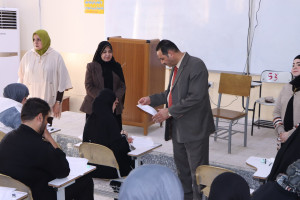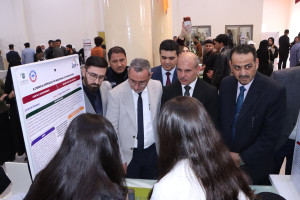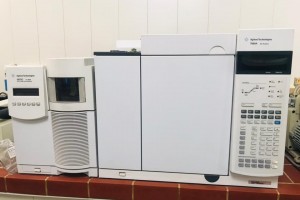
The College of Education for Pure Sciences discussed a PhD thesis at the University of Basrah in the Department of Physics on (measuring the concentration of uranium in soil and boron in some river waters in Basrah Governorate)
The dissertation that was administered by (Mustafa Ahmed Jawad) included
In this research, the concentration of boron and uranium was measured in the water and soil of Basrah Governorate. The work included 154 samples (73 soil samples and 81 water samples).
In order to find the concentration of boron in water samples, the ICP-OES technique and the SSNTDs technique were used by nuclear interaction (n,α) by bombarding boron (10B) with thermal neutrons from a neutron source (241Am-Be), where the results showed that the highest concentration of boron in water Wells recorded by ICP-OES technique (mg/L9.3) in Al-Shuaiba 2 farm, the highest concentration in river water (mg/L1.7) in Al-Huwair Al-Saghir, and the minimum value in well water (4.3 mg/L) in Umm Qasr farm 1, the minimum value in the water (0.19 mg/L) in the chiller. While using the SSNTDs technique, it reached the highest concentration of boron in well water (9.8 mg/L) in Al-Shuaiba Farm 2, and the highest concentration in water (1.85 mg/L) in Al-Naft Street, and the lowest value for well water is (4.8 mg/L). At Umm Qasr 3 farm, the minimum value in water was (0.21 mg/L) in the step area. These results indicate that the boron concentrations in Basrah governorate are still safe and within the permissible levels, although there are a few well samples with boron contents above the permissible levels.
The second topic included the evaluation of uranium levels in Basrah Governorate. The ICP-MS technique and the SSNTDs technique were used by the nuclear reaction 235U(n,f) to calculate the uranium concentration. The results showed that the uranium concentrations, despite their variation, were within the permissible limits. The highest concentration of uranium was in the Shuaiba center using the ICP-MS technique (2.6 ppm), and the lowest value for the uranium concentration was (0.6 ppm) in Umm Qasr 1. When using the SSNTDs technique, the highest uranium concentration was (0.39 ppm ± 2.67) in the Shuaiba center, and the lowest value For the concentration of uranium in a farm (0.12 ppm ± 0.65) Umm Qasr 2. However, the level of uranium in soil samples is below the permissible limits (11.7 ppm) for all stations from the United Nations Scientific Committee on the Effects of Atomic Radiation.








